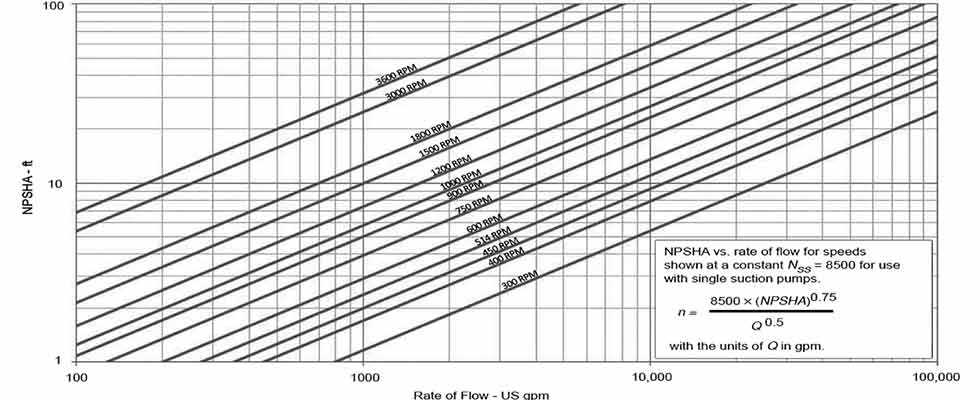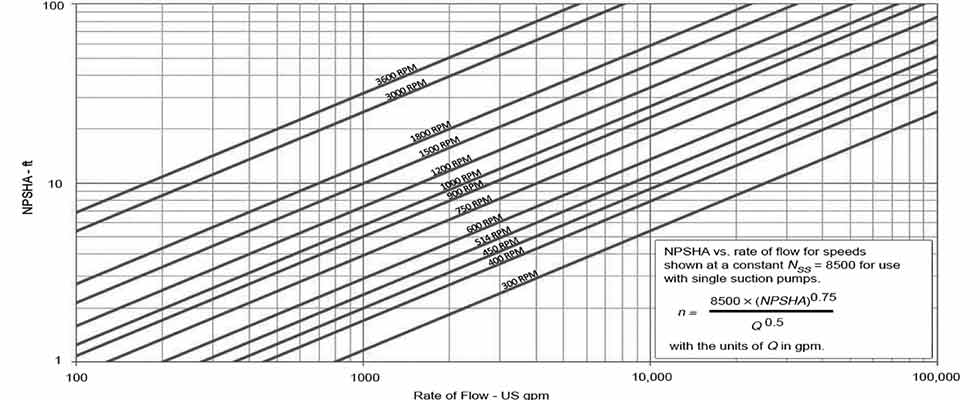
Aside from handling solid waste and sludge, what else must be considered for wastewater pumps?
Typical pumping considerations for a wastewater pump include the ability to pump solids, grit, corrosive materials, sludge, scum and smaller particles that have agglomerated into larger particles. Aside from these requirements, additional considerations should be made when selecting a pump for wastewater applications. These include the altitude, temperature, flow rate and rotative-speed limitations.
When considering altitude, it is important to know that the site evaluation for the pump installation can affect pump operation. In general, the higher the elevation of the installation, the less suction lift there is available for the pump. For pumping systems with atmospheric suction pressure, the net positive suction head available (NPSHa) calculation should be checked to include the actual atmospheric pressure at the jobsite.

Altitude will also affect the selection of the pump driver and, when applicable, the variable frequency drive (VFD) because higher altitudes will result in the air providing less cooling. The reduced cooling may require the driver and VFD to be derated.
Equation 1
The temperature of the liquid pumped affects the ability of the pump to operate. Specifically, high-temperature liquids will have higher vapor pressure, reducing the NPSHa. If not properly accounted for, the pump may cavitate, which can cause reduced performance, physical damage to the pump components and can increase vibration.
Current wastewater pump design technology allows reliable operation of pumps with values of suction specific speed (Nss) through approximately 250 for metric units (13,000 for U.S. customary units, Nss), depending on eye peripheral velocity, materials of construction, range of operation, pumped liquid properties, and other factors.
Higher Nss values result in pumps designed with lower NPSH requirements at the same or higher operating speeds. The maximum speed for a pump (n) due to NPSHa can be calculated from the Nss formula by expressing the rotative speed as a function of NPSHa, pump rate of flow (Q), and Nss (Equation 1).
The curves in Image 1 are an example of determining the maximum pump speed based on the NPSHa using a suction specific speed of 165 (8,500) and operating close to the best efficiency. Image 1 could be reproduced based on Equation 1 for any suction specific speed, such as the 250 for metric and 13,000 for U.S. units that was discussed above.
For more information regarding wastewater treatment pumps, refer to HI’s Wastewater Treatment Plant Pumps by visiting www.pumps.org

